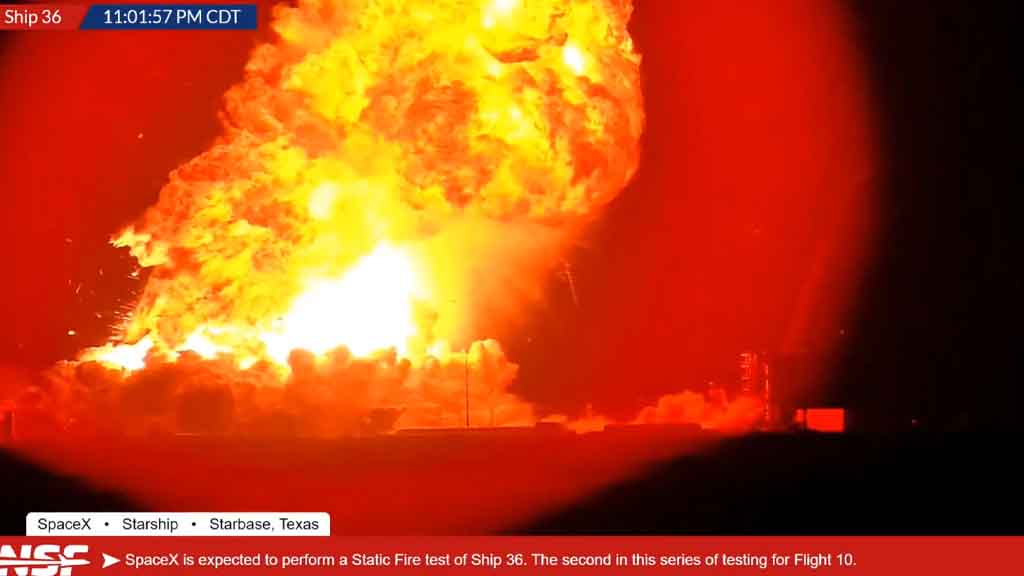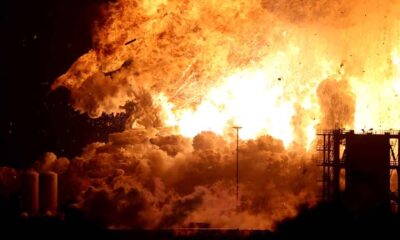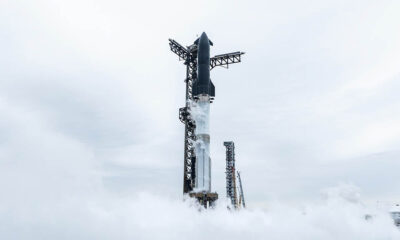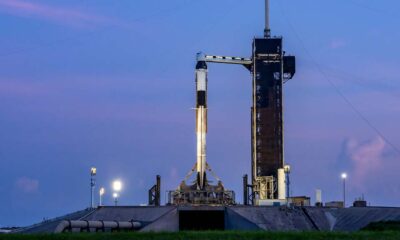SpaceX
SpaceX Starship 36 exploded at the test site, could ground Flight 10

SpaceX Starship Flight 10 has received a setback before leaving the launch pad, as its ship 36 has caught fire at the test site and exploded in the aftermath about an hour ago.
The rocket maker has been testing the latest ship for Flight 10 at Masseys at Starbase, located in Texas. It’s a primary location for cryogenic and structural testing of Starship, including the static fire.
Footage shared via multiple sources, including NSF, showed the ship standing idle on the test pad, but an instant spark caught a massive explosion at 11:01 PM CDT.

Source – Nasaspaceflight
A few days ago, the company conducted a single-engine static fire test on the ship and is preparing to conduct a full-blown static fire with all Raptor engines.
These tests are designed to verify the rocket’s propulsion system, engine ignition, and ground support before clearing the vehicle for an actual flight.
Early insights on this matter found no reports of injury to any staff or any other person. In the meantime, the fire department is already en route to the location to stop the fire from spreading further. These tests are conducted with top safety standards while keeping the possibility of an error.
ANOMALY! Just before Ship 36 was set to Static Fire, it blew up at SpaceX Masseys!
Live on X and YT:https://t.co/GPjZIX1Zyd pic.twitter.com/CfZhDeSGae
— NSF – NASASpaceflight.com (@NASASpaceflight) June 19, 2025
For now, SpaceX has not commented on the root cause of how Starship 36 exploded at the test site.
Starship is an under-development space launch vehicle with nine past tests, and the most recent was conducted on May 27, 2025. Throughout the program, the first and second stages have achieved several milestones, including liftoff with 33 Raptor engines, hot-staging, the first stage’s tower catch, the second stage’s ascent phase, orbital coasting, reentry, splashdown, and more.
Unlike the booster, the ship has to perform complex tasks in orbit, including payload deployment and engine relit. It is also designed for reusability, which means the ship, at some point, will also land vertically at the launch site.
However, things aren’t looking good for the upper stage since Flight 7. The ship employed for the 7th and 8th flight met with an anomaly before completing the ascent phase. Though it marked a successful ascent phase during flight 9, the upper stage failed to complete the coasting and lost attitude control.
Flight Delay
This is the first time a fully assembled ship has exploded at the test site, and the magnitude of the anomaly could trigger an FAA inquiry. Subsequently, we may see a delay in the upcoming flight for both investigation and testing purposes.










